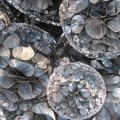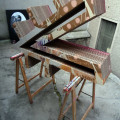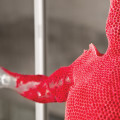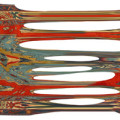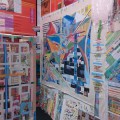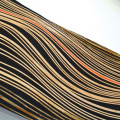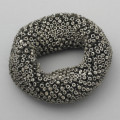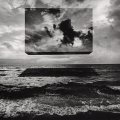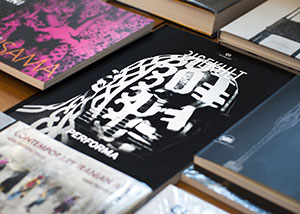Carlie Trosclair is an installation artist based in St. Louis, Missouri. Trosclair earned an MFA from the Sam Fox School of Design and Visual Arts at Washington University in St. Louis, a BFA from Loyola University New Orleans, and is a Fellow of the Community Arts Training Institute (MO). Approached through a lens of reordering and rediscovery, Trosclair’s site sensitive installations create new topographies and narratives that highlight structural and decorative shifts that evolve over a building’s lifespan. “Work I’ve been doing the past few years is done within or inspired by abandoned buildings … doing site-sensitive cuttings of the wallpaper and plaster to create a lace-like composition that in many ways mimics the deterioration of the wall. I’m taking cues from the decay pattern to create new patterns and melding them together. I think of it as engineering an experience. You’re creating the full experience a person is walking through. The Contemporary Art Museum was a challenge because I’m used to walking into a space and being inspired by the actual layers and buildup of history over time. But the museum setting is obviously not that kind of a setting. So I had some ideas for making sense of it so it felt like it was part of the museum. That’s where I got the idea of excavation, a fictional timeline, what was here before. That’s what’s exciting for me—looking at what now seems useless and not a beautiful wallpaper pattern anymore and highlighting this new aesthetic as it’s deteriorating. I’ll approach it more like a discovery. I’ll go in with some sort of idea of what I want to highlight or touch on, and from there it’s just about playing around with what I can do based on the state of the material. I always have my Xacto knife. A nail gun is always really handy. For this project, my new tool to always have in my car was a cordless reciprocating saw. Also, I started carrying around a new tool for me: A crowbar. I’ve been thinking a lot about macro and micro. I’ll work detailed and up close and then step back to see what the installation looks like from this angle, to see if I’m achieving it—and then make a new mark based on what I noticed when I entered from a new way. There’s themes of loss and memory. It’s part of the urban landscape. Using everyday materials allows access points for people who aren’t necessarily around art. We’ve all grown up in homes. We’ve all lost homes too. … People get it because it’s something we can all relate to. Everyone has a creative voice in some form. For me, creativity comes from thinking outside of our constructed norms. … The first step in the creative process is trusting your gut, your eye, your ear. The secret is making it for yourself, trusting your eye, listening to your instinct and zoning everything else out.”
|
|
|




























